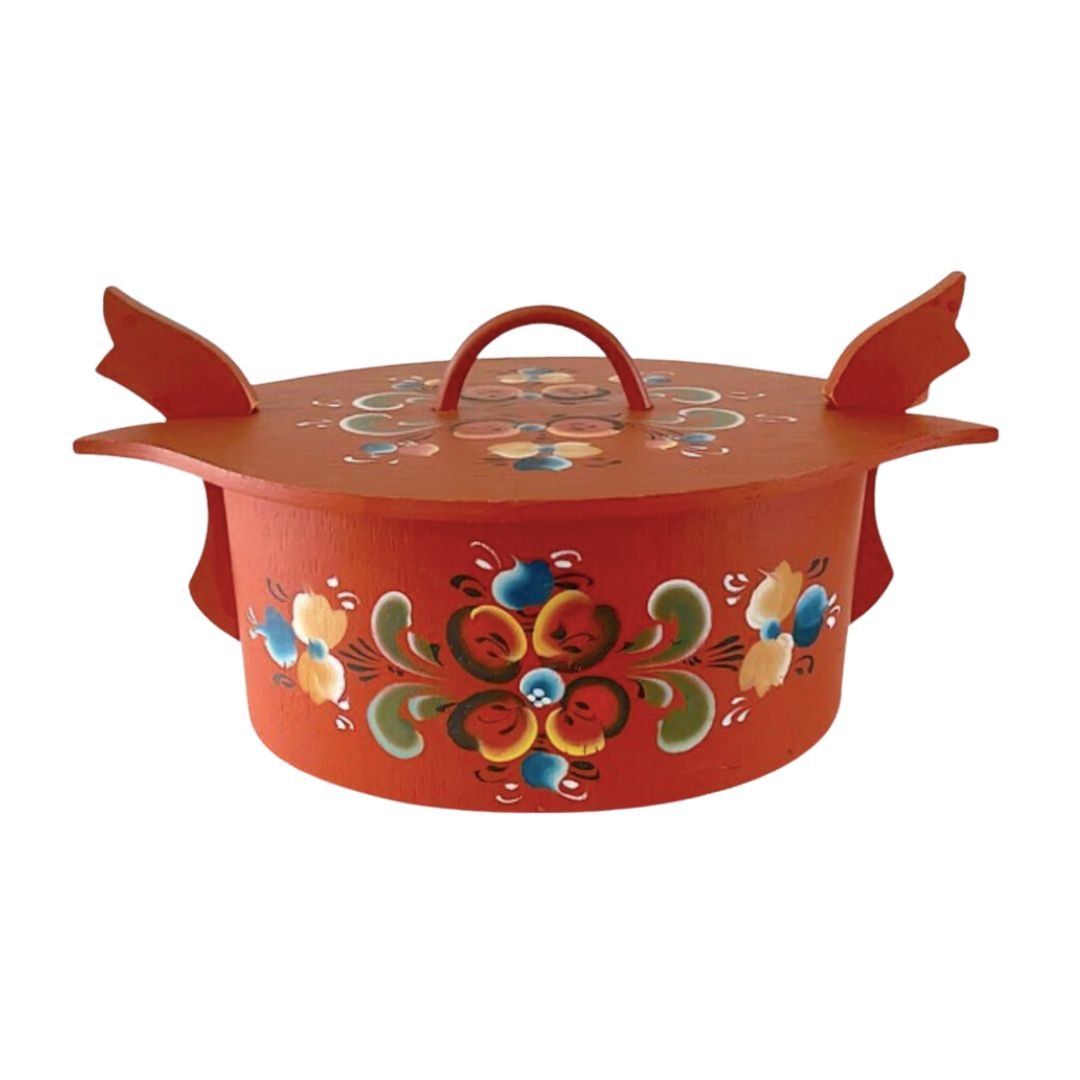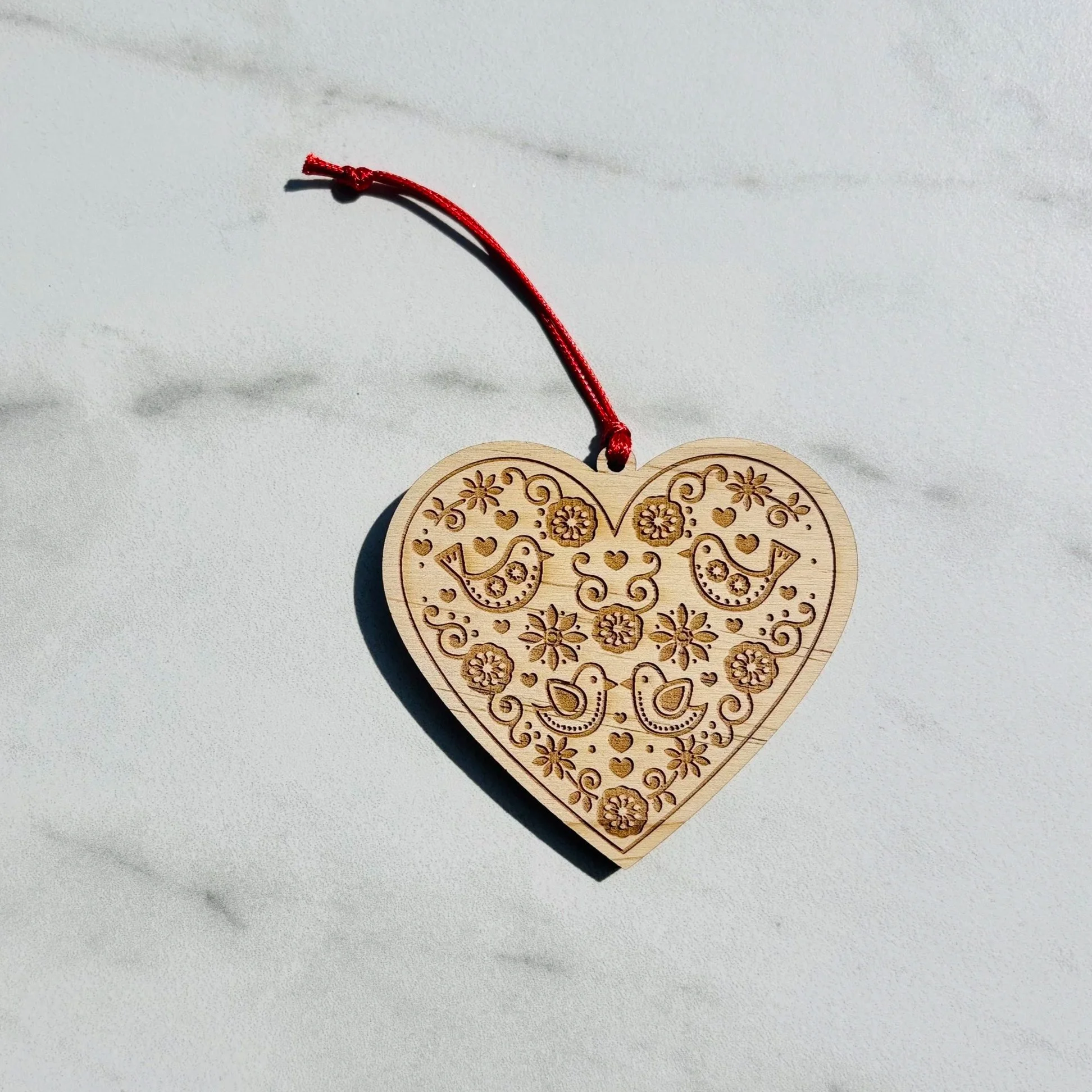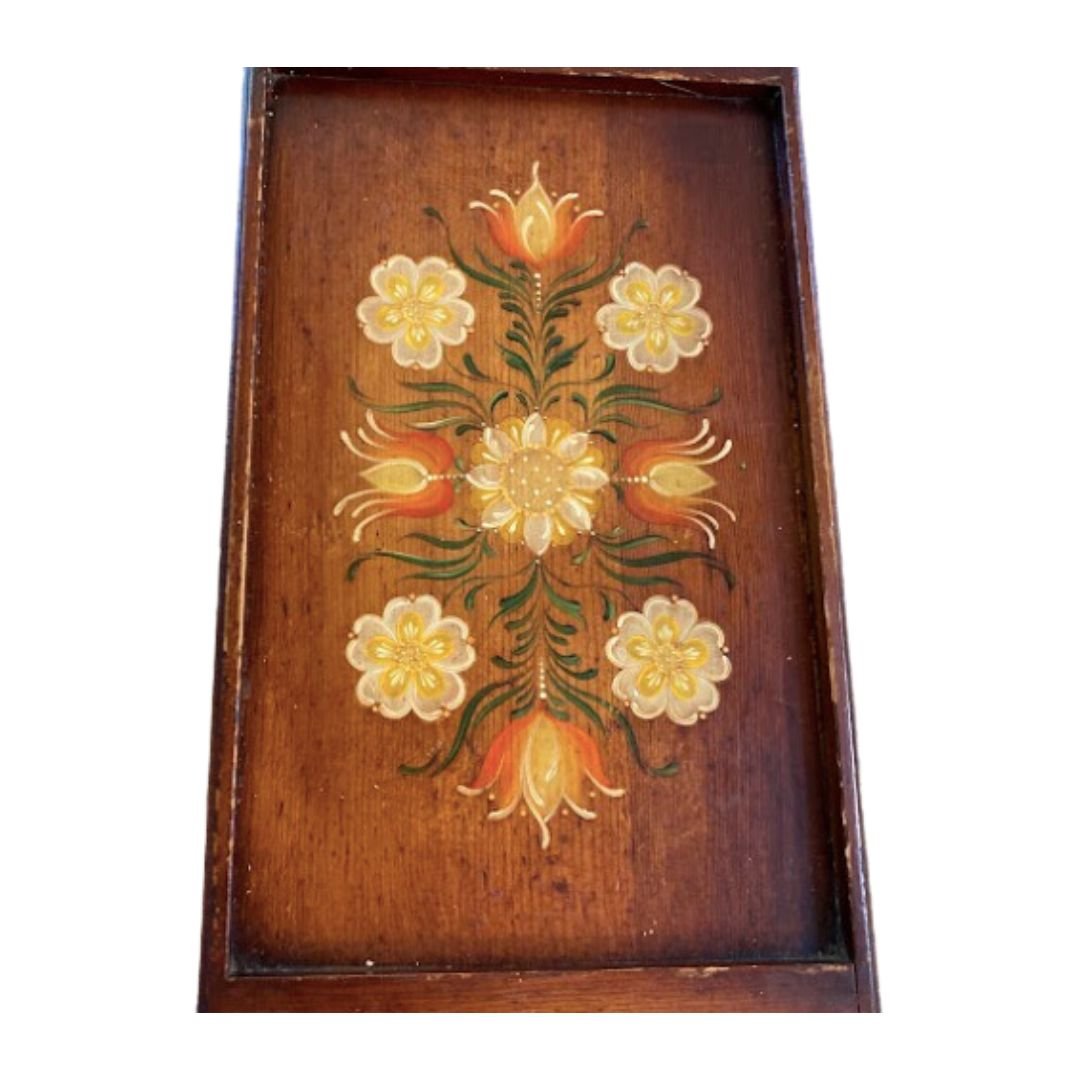What Is Rosemaling and How Is It Used in Modern Designs?
If you’ve ever stepped into a cozy Scandinavian home and spotted flowing floral patterns painted on wood, you’ve likely encountered Rosemaling — Norway’s most beloved folk art tradition.
From church walls in the 1700s to modern gift wrap, home decor, and children’s books, Rosemaling’s journey is a story of creativity, heritage, and timeless beauty.
At Scandinavian Hearts, we’re passionate about keeping this art alive — not just as something to admire in museums, but as a living tradition that families can enjoy every day. In this guide, we’ll explore:
The history and meaning of Rosemaling
The different styles and what makes them unique
How Rosemaling is being used in modern designs and home decor
Ways to bring Rosemaling into your own life (with examples from our products)
What Is Rosemaling?
Rosemaling (pronounced ROSE-uh-mah-ling) is a decorative painting style that originated in rural Norway in the 1700s. The word means “rose painting,” but the designs go far beyond roses — incorporating stylized flowers, scrolls, leaves, and sometimes entire landscapes.
What makes Rosemaling so distinctive?
Flowing curves and scroll shapes that create a sense of movement
Bright colors like red, blue, green, gold, and white
Freehand painting techniques passed down through generations
Regional styles that each tell a slightly different story
Rosemaling was traditionally painted on wooden objects and interiors — from chests and furniture to bowls, cupboards, and church pews. In Norway’s long, dark winters, these vibrant designs brought warmth and beauty into everyday life.
A Brief History of Rosemaling
In the 18th century, Norway’s wealthy towns adopted Baroque and Rococo influences from Europe. Rural artists — often traveling painters — adapted these styles into a more folk-oriented, nature-inspired form.
Rosemaling quickly became a way for Norwegians to express creativity, tell stories, and showcase local identity. Each region developed its own patterns and color schemes, and these designs were often passed down in families.
When Norwegian immigrants came to America in the 1800s and 1900s, they brought Rosemaling with them — especially to areas like Minnesota, Wisconsin, and Ballard, Seattle (our home community). Today, it remains one of the most recognized symbols of Norwegian culture.
Top Questions People Ask About Rosemaling
What are the main styles of Rosemaling?
Telemark – Flowing, asymmetrical designs with fantasy flowers
Hallingdal – Symmetrical, bold floral scrolls
Rogaland – Dark backgrounds with bouquets and scrolls
Valdres – Incorporates landscapes and architectural elements
Is Rosemaling only for holidays?
Not at all! While it’s popular in Scandinavian Christmas ornaments and festive decor, Rosemaling’s floral and nature motifs make it perfect for year-round home styling.
Can I learn Rosemaling as a beginner?
Yes! Many people start with small wooden hearts, ornaments, or craft kits before moving on to furniture or larger projects. The designs are fun to learn and deeply relaxing to paint.
Rosemaling in Modern Designs
You might expect Rosemaling to live only on antiques, but it’s experiencing a revival in contemporary style. People are blending this heritage art with modern Scandinavian minimalism — creating decor and fashion that feels both fresh and timeless.
Here’s how Rosemaling is showing up today:
Scandinavian Home Decor
Rosemaling adds warmth and storytelling to clean Nordic interiors. Think of it as the colorful thread in an otherwise neutral space.
Modern applications include:
Wooden hearts on shelves or mantels (perfect for layering in hygge-inspired spaces)
Ornaments hung year-round on wall hooks or seasonal trees
Tableware like placemats and napkins with subtle folk-art patterns
At Scandinavian Hearts, our wood hearts and ornaments are inspired by traditional Rosemaling shapes and colors — but designed to fit beautifully into modern homes.
Children’s Books & Education
Rosemaling isn’t just about decoration — it’s a storytelling tool. Its swirling patterns and symbolic motifs make it a wonderful way to introduce kids to cultural heritage.
Our bestselling Anna and the Rosemaling Hearts children’s book uses folk-inspired illustrations to share a story of family, tradition, and creativity.
Pair the book with:
Stickers for craft activities
Printable coloring sheets based on Rosemaling designs
A hands-on “paint your own wood heart” family night
Seasonal Celebrations
Rosemaling patterns are especially popular during:
Christmas – ornaments, stockings, table settings
Weddings – guest books, wooden signs, keepsake boxes
Heritage festivals – banners, booths, and displays
Because it’s so versatile, Rosemaling can be adapted for any special occasion where beauty and meaning are valued.
How to Bring Rosemaling Into Your Life
You don’t need to be an artist to enjoy Rosemaling. Here are some easy ways to incorporate it into your home, lifestyle, and traditions:
Decorate with Wooden Hearts – Display on bookshelves, hang on walls, or add to seasonal centerpieces.
Use Folk-Inspired Tableware – Our placemats and napkins bring subtle Nordic charm to everyday meals.
Give Rosemaling-Inspired Gifts – Ornaments, books, and gift wrap that celebrate culture.
Create a Craft Tradition – Paint wooden ornaments as a family each holiday season.
Wear Your Heritage – Cozy sweatshirts with folk motifs for casual, meaningful style.
Why Rosemaling Still Matters Today
In a fast-paced, digital world, Rosemaling invites us to slow down. Its curves and colors connect us to nature, heritage, and each other.
It’s more than just a design trend — it’s an art form that carries stories across generations. Whether you hang a wood heart on your wall, wrap a gift in patterned paper, or read a children’s book inspired by folk art, you’re part of that story.
Explore Rosemaling-Inspired Products at Scandinavian Hearts
Bring tradition into your modern life with our collection:
Wooden Hearts – Timeless decor with folk art charm
Children’s Books – Share heritage stories with kids
Ornaments – Keepsakes for holidays & beyond
Wrapping Paper & Gift Tags – Scandinavian style for every occasion
Sweatshirts – Cozy, meaningful apparel
Tableware – Placemats and napkins with subtle Nordic motifs
We believe every home should have a little piece of history — and a lot of heart.





